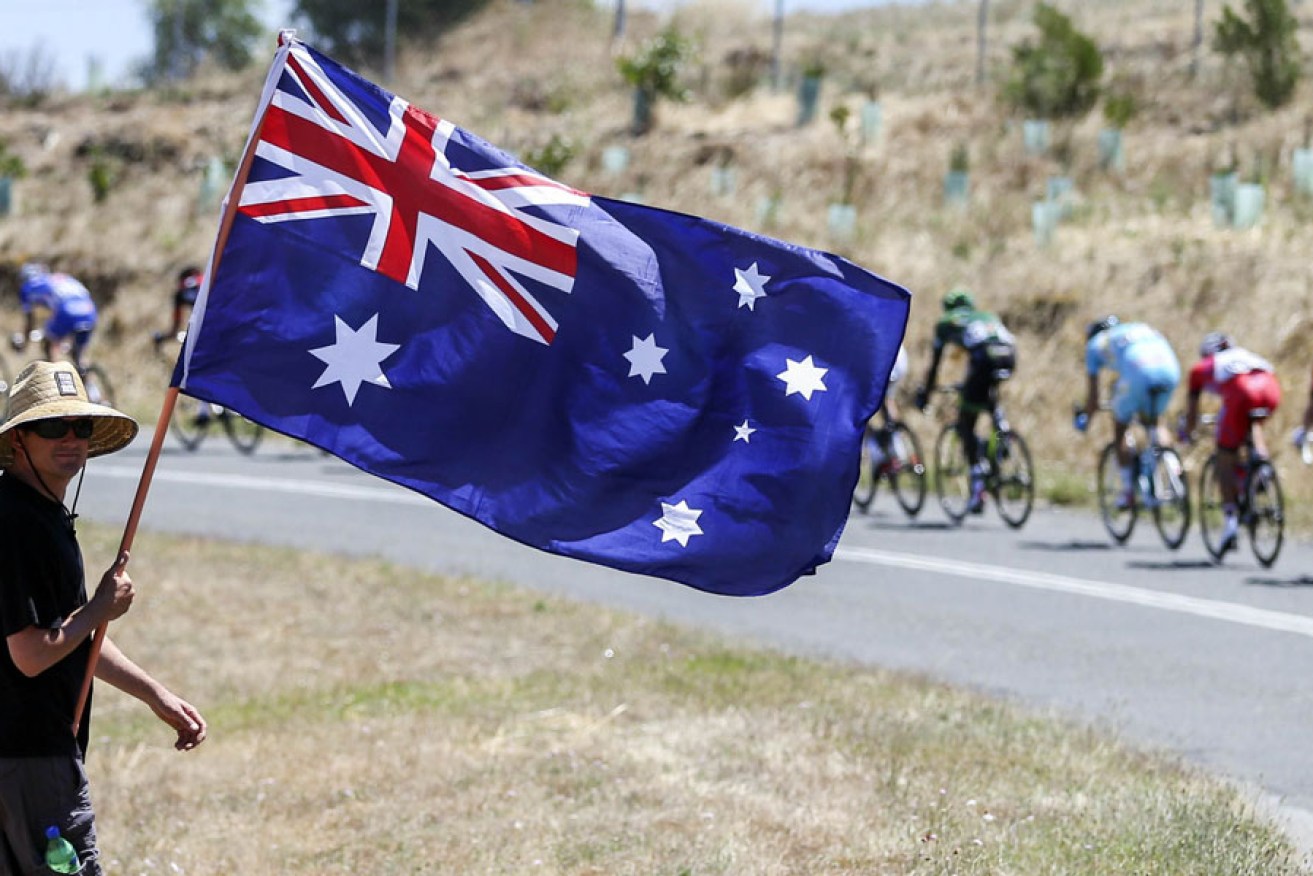Since the First Fleet arrived in Sydney Cove in 1788, the one common denominator about Australia is that we are a nation of displaced people.
Everyone is an immigrant.
Those of us who were born here still had ancestors who arrived from someplace else.
The fact of immigration is reflected in our national anthem, at the start of the second verse that’s not sung very often:
For those who’ve come across the seas
We’ve boundless plains to share…
People come here to escape a difficult past or to build a new future.
Some are economic migrants in search of work and better prospects for their children. Others flee from persecution and death, forced into exile from their original homelands.
Regardless of the circumstances of our arrival the aspiration of us all is to lead a stable, productive life as good Australians.
So it’s worth asking on this, our national holiday, what it means to be an Australian?
The national anthem suggests we are created from special Australian clay.
Our land abounds in nature’s gifts
Of beauty rich and rare…
So it seems we have a head start over the rest of the world. An unfair advantage? Yes, it is. Do we believe that other people would want to be us if they could? Yes, we do.
The national psyche contains a clichéd set of Aussie traits, projected and enlarged in legend and on television beer ads.
Those supposed attributes include a natural and effortless athleticism. We like to think we are straightforward and bluntly honest. We act independently rather than blindly obeying stupid rules. A carefree people having a good time whenever possible.
As with all stereotypes, this is both a misleading picture and it contains a thin thread of truth running through it.
But does the typical Aussie exist in reality?
The average Australian is in fact not a bloke, that’s the first upset to the myth.
Based on data from the latest Census, the average Aussie is a 37-year old woman.
She was born in Australia and both her parents were also born here.
Her ancestry is English, Irish or Scottish.
She speaks only English at home and is a Christian, most likely a Catholic.
She is married and lives with her husband and two children, a boy and a girl aged nine and six respectively.
She has a Certificate in Business and Management, and drives to her job as a sales assistant.
Her family has a three-bedroom house and two cars in a suburb of one of Australia’s capital cities.
So there she is, Edna Average.
Except the Aussie Everywoman does not exist either. No single person ticks all those boxes. It is a national profile that no one fits.
In fact, the statistical “average” masks the considerable diversity of the nation.
Australians come from more than 200 countries, speak over 300 languages at home, belong to more than 100 different religious groups, and work in more than a thousand different occupations.
Truth is, trying to define who is a typical Australian is as ridiculous as trying to say that one person is more Australian than the other.
Australia thrives through its multicultural diversity. That’s how it is being an Australian these days.
We have managed to embrace a national sense of Australianness without forcing people to surrender their cultural identities. Those differences are what make each of us human.
But Australian life is a joint enterprise.
However we start out as individuals, we are all collectively responsible for the state of the nation today, good or bad.
That is the underlying message of Australia Day – that we are in it together, we’ve made it this far, so let’s make it better.
Around the nation this weekend, Citizenship Ceremonies are welcoming New Australians. New Australian is an old term first coined to describe the wave of non-British immigrants following World War Two.
These people, often refugees, and their descendants have since become mainstream Australia.
The Citizenship Pledge asks people to commit themselves to Australia, ‘whose democratic beliefs I share, whose rights and liberties I respect, and whose laws I will uphold and obey.’
The pledge outlines what it means to be an Australian.
But it does not try to create an Australian template, one from which every person is cloned in the same mould.
Nor is a Citizenship Ceremony some sort of sheep dip that magically inoculates people with the national gene.
We are a different country to the one established by the First Fleet under Captain Arthur Phillip those 226 years ago.
Our nation has changed from its original place as a penal colony to one that believes in democracy and freedom.
We have maintained a long continuity of democratic government.
We believe in the electoral ideal of one person-one vote, each vote worth the same.
We continue to live without civil wars, insurrections or sectarian violence on our soil.
Touch wood.
None of us corresponds with the ideal Australian. There is no one way to be an Australian.
But there is an Australian ideal, an equal opportunity to pursue prosperity, justice and human dignity irrespective of origin.
This is Australia. It’s worth celebrating.
Des Ryan is one of South Australia’s most respected journalists and a former editor of InDaily.
He gave this Australia Day address at Glenelg on Sunday, hosted by the Holdfast Bay Council and Woolworths. He prefaced it by acknowledging and paying respect to the Kaurna people.





